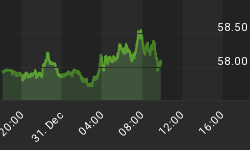Rolling cumulative rates of return are important and useful, but so too is a fixed view of returns for discreet periods of time. Calendar year views may relate more closely to the way many investors plan and evaluate their portfolios. Calendar year views are also helpful in visualizing the frequency of negative periods and the severity of asset draw-downs in those negative periods.
Former Fed Chairman Greenspan made a statement in his recent Congressional testimony that may make an 80+ year history appear more relevant. He said:
... modern risk management paradigm held sway for decades. The whole intellectual edifice, however, collapsed in the summer of last year because the data inputted into the risk management models generally covered only the past two decades, a period of euphoria. Had instead the models been fitted more appropriately to historic periods of stress, capital requirements would have been much higher and the financial world would be in far better shape today, in my judgment.
The chart below for the S&P 500 (or it closest cousin in early years) shows calendar year returns since the beginning of 1927 through Oct 24, 2008. [investable proxies SPY and IVV]

We're not done with 2008 yet, but so far its one for the history books as the chart clearly shows.
On a YTD basis, the S&P 500 index is down 40.3% as of Oct 24. For 52 weeks, the index is down 40.6%
According to historical research by Vanguard, the worst calendar year before now was 1931, when the S&P index went down 43.1%. If we go down more than 2.5% over the remainder of this year, 2008 will be the single worst year for the S&P index since 1926.

Data Note: Vanguard probably has better historical data than we do. Ours is solid from 1950 forward, but we used a construct of "price change + year-end yield" to estimate total return for years before 1950. The results differ somewhat from Vanguard's numbers, but the story remains the same. We illustrate 21 down years, while Vanguard reports 24 down years. The difference resides in the 1926 - 1949 period.
Inside of the 2008 results, there isn't a much better picture on a sector-by-sector basis. Only utilities, healthcare and consumer staples have done better than the index overall, and they are still major losers.

Consider the long-term past as well as the short-term and present, when conceiving of the future.
















